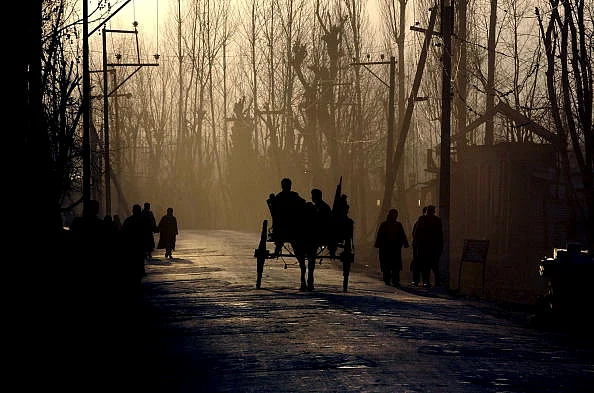The tall peepal tree, standing majestically in the centre of the village, was more than just a natural marvel; it was a living conduit of tradition. Its deep roots, embedded firmly in the soil, symbolised the sacred space where the fabric of the community was woven together. In the pre-partition period, as India moved towards Independence, the village was a remarkable blend of Hindu-Muslim unity, cohabitation, and interdependence. Economic, social, and communal bonds flourished here, reflecting a harmonious coexistence. Under the shade of this deciduous tree, village elders would gather and spend hours together. The respite from the sweltering summer heat provided not just relief but also an opportunity to share thoughts and address common concerns. Among the pressing issues discussed were the potential impact of partition lines on the village and the uncertain future of around 40 Muslim families who might face displacement or forced departure.
Nearby, an ancient community stood as a silent witness to these poignant conversations about shared anxieties among the local Hindus. The escalating situation in border villages, such as Karloop — a desolate village just a few kilometres from the Indo-Pak border — caused significant concern among the elders. Disturbing reports of violence, including attacks on families fleeing from India, and the targeting of refugees by outlaws, created a climate of fear. Homes were ransacked and burned, women were subjected to robbery, assault, and abduction, and the physical violence, including lynching and kidnapping, was deeply disturbing. Nevertheless, the village’s common resolve was to ensure the safety of every Muslim family. They pledged to provide safe passage, allowing families to carry whatever belongings they could until the borders between the two nations were officially established. This process continued for two to three months.
My father, now 93, retains vivid memories of those pre-partition times as a teenager. Reflecting on that era, he shares, “Though I was a child, I sensed the gravity of the situation. My feelings were mixed. India's attainment of Independence was overshadowed by the traumatic events and pains of partition. Our village, part of the erstwhile Poonch jagir, was also facing upheavals and transitions, coinciding with the accession of Jammu and Kashmir to India — a significant milestone.”
He recalls the painful personal tragedies, including the story of his young sister, who fell victim to the communal frenzy. “She was driven out of the village by a group of men looting their way from village to village. Estranged from our family, who were also fleeing, she was abducted and held hostage with other women and men. In a desperate bid to escape, she abandoned her belongings, including gold and jewellery, and jumped from the rooftop. The shock proved too much for her, and she later died, unable to bear the trauma.”
Despite these tragedies, the story of the vibrant village remains a testament to resilience. Faloz, the washerman, was an exceptional individual known for his skills in drafting petitions, letters, and land documents in Urdu. Many young boys learned Urdu writing skills from him. Maula, the skilled carpenter, and Lalu, who excelled in vegetable cultivation, along with Musra and Kaka ‘Teli’, were valued members of the community, each contributing significantly to village life.
When partition finally occurred, the village grieved. Many Muslim families who migrated entrusted their belongings to locals, hoping to return one day. However, in the ensuing chaos, some miscreants took advantage, resorting to looting and arson at the abandoned homes.
Yet, the village endured, holding onto its traditions. It survived the partition, slowly rebuilding and emerging from the dark days of division. The old peepal tree and the ancient well still stand, though the village's landscape has changed significantly. The once lively gatherings under the tree are now silent. While people still come together, the discussions and bonds are not the same. Prosperity is evident in the luxuries of the present day — smartly dressed children now attend English medium schools in dedicated yellow buses, and private cars are common.
Old dusty paths have been replaced by metalled roads, and the surge of cars and motorcycles represents a new dimension. Mobile phones have replaced face-toface interactions, and social media has taken over from community gatherings. A new ring road, part of a four-lane project connecting Delhi with Srinagar, now cuts through the village, improving highway access.
The village’s traditional assets — the perennial Kuhl (water channel), the ancient pond once blooming with lotuses, and the clear, unpolluted Cho (rivulet) — are fading due to neglect and abandonment. Migrant labor from Bihar, Jharkhand, Chhattisgarh, West Bengal, and Assam now performs farm operations, reflecting the rapid changes in life.
Yet, despite the changes, the village remains a source of pride for me. Its legacy, history, and accomplishments are celebrated on every Independence Day, reminding me of a childhood filled with struggle and facilities that shaped its rich past.


















